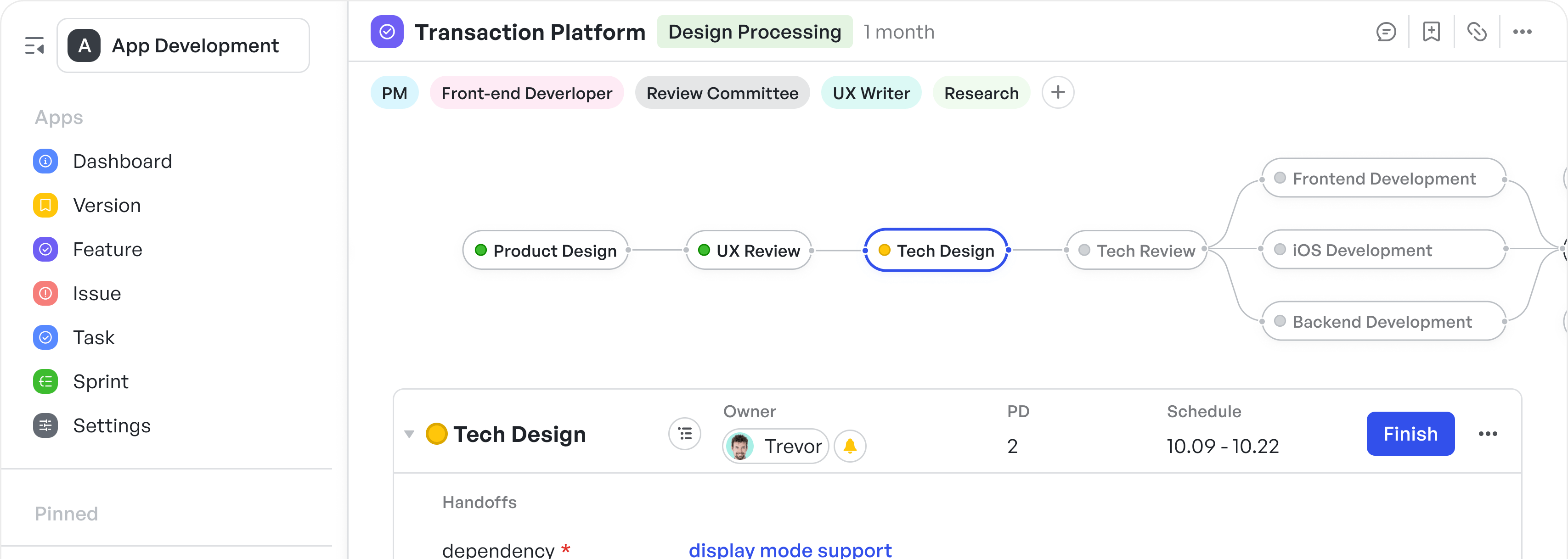Did you know 83% of professionals depend on collaboration software to boost productivity and communication in remote and hybrid work environments?
Crazy, right? Think about it—how else would you survive juggling endless emails, meetings, and project deadlines across time zones? It’s too complicated without the right tools.
Collaboration software has become irreplaceable, creating a digital workplace necessary for smooth workflow, efficient task management, and instant communication among colleagues.
With global teams becoming the norm, collaboration software is like having your own virtual office—instant chats, task boards, and even those fun GIF reactions that make work less work and more fun. Have you ever tried managing a big project without something like this? It’s pure chaos!
Imagine wrapping up a project without the stress of missed deadlines or the dreaded "oops, I didn’t see that email" moments. Sounds ideal, right?
So, let’s explore some of the best collaboration tools for 2025.
Types of Collaboration Software
Alright, let’s talk collaboration tools. Not all tools are created equal, and picking the right one can feel like choosing the perfect coffee order. It's definitely overwhelming at first, but incredibly satisfying once you get it right.
Here’s a quick breakdown to make things easier for you:
- Task-focused collaboration tools
- Task-focused collaboration tools
Ever had a project where nobody’s sure who’s doing what? Yeah, we’ve all been there. Online collaboration tools are like the ultimate fix for that chaos. They let you assign tasks, set deadlines, and manage everything in one place. No more “Wait, wasn’t Bob supposed to do this?” moments.
Tools like Meegle, for instance, excel in workflow management. During a product launch, such tools can streamline operations by tracking content deadlines, managing design updates, and coordinating feedback from external collaborators. They act like a virtual project assistant, ensuring everything stays on track and on time.
- Communication-focused collaboration tools
- Communication-focused collaboration tools
Picture this: You’re in the middle of a brainstorm, and someone drops a genius idea in the chat.
Boom, instant clarity! Or maybe you’re coordinating a last-minute presentation, and a quick message smooths out all the wrinkles.
- File-sharing-focused collaboration tools
- File-sharing-focused collaboration tools
Oh, the joy of hunting for “Final_Presentation_v3_FINALfinal.pdf” in your inbox. Project management tools are here to put an end to that chaos. They allow real-time file sharing and editing, making group tasks like updating reports or slide decks a breeze.
Updating a client pitch deck can be a tedious process, especially when multiple versions are shared via email. Collaboration tools simplify this by enabling team members to make edits live in real time, reducing turnaround time significantly. Many tools also offer mobile apps, allowing users to stay updated and make changes on the go.
To help you find the right fit, here’s a quick comparison of key features, categories, and pricing across different tools.
Comparison table: Features, categories, and pricing
We've compiled a handy comparison table to make choosing the right online collaboration tools simple and stress-free.
It includes all the essentials: key features, types, when to use them, and starting prices. This way, you can find the perfect project management tools to match your team’s needs and budget, all without the hassle.
Why Meegle Stands Out Among Collaboration Tools in 2025
250px|700px|reset
加载中,请稍后
Meegle project management tool
Meegle is your go-to tool if managing projects feels like herding cats. It’s designed to simplify the chaos, boost your team’s productivity, and keep everyone on the same page.
At its core, Meegle excels at real-time task management, detailed reporting, and seamless team collaboration. What sets it apart, however, is its powerful integration with tools like Slack and Lark. These integrations make it easy to align communication and collaboration, so your team can stay connected without juggling multiple platforms.
One of Meegle’s best features is its ability to help your team communicate and coordinate effortlessly. There will be no more endless email threads or “Who’s handling this?” moments. Plus, its transparency ensures everyone knows exactly what’s happening and when, all while working seamlessly within your favorite communication tools
Why choose Meegle?
If remote collaboration is making you nervous, Meegle might help. It’s designed to tackle the everyday challenges of working with a distributed team.
Here’s how Meegle makes your life easier:
- You can assign and track tasks effortlessly without confusion about who’s doing what.
- It lets you monitor project progress in real time, giving you complete visibility without micromanaging.
- Its workflow visualization tools help your team see the big picture and focus on what matters most.
Key features
- Task management and assignment: You can assign tasks, set deadlines, and track progress, all in one place. It gives you a clear view of your project goals, so nothing falls through the cracks.
- Advanced reporting: Meegle automatically generates detailed progress reports. These insights help you monitor performance and deliverables without spending hours on manual updates.
- Integration with productivity tools: Meegle integrates multiple tools (like Slack and Lark), making project coordination smoother.
- Feedback and approval workflows: Streamline collaboration with tailored feedback and approval loops.
Pros and cons
Who it’s for
Meegle is ideal for teams that enhance coordination, particularly in distributed teams or those managing complex projects. Its ability to offer real-time visibility into workflows makes it perfect for project managers and businesses needing transparency.
Specs and configurations
Meegle features an intuitive and user-friendly interface. Its powerful collaboration features, such as visual dashboards and an approval process, allow teams to manage unlimited projects.
Integrations with third-party apps like Google Workspace ensure that Meegle fits in seamlessly.
Other Top Online Collaboration Tools for 2025
Online collaboration tools change how teams manage projects, communicate, and share information.
Below, we explore the leading options besides Meegle, highlighting their strengths, weaknesses, and ideal use cases.
#1. Jira
250px|700px|reset
加载中,请稍后
Jira project management tool
Jira is a dynamic team collaboration tool tailored for agile teams and software projects, seamlessly integrating coding, communication, and release management. With features like real-time updates, Smart Links, commenting, and attachments, it offers a streamlined, multiplayer experience. As a flexible and integration-friendly project management solution, Jira keeps teams aligned and processes transparent, making it an excellent choice for teams of all sizes.
Pros and cons
Who it’s for
Jira is perfect for software developers, IT operations teams, and engineering teams that use agile or DevOps methodologies.
It will be a good fit for companies looking for a powerful tool for bug tracking, feature development, and project timeline management.
Specs and configurations
Jira provides comprehensive tools and configurations to support agile project management and collaboration.
It includes Scrum and Kanban boards for managing tasks and visualizing workflows, a powerful issue-tracking system for resolving bugs, and customizable workflows that can be tailored to fit unique team processes.
Its integration capabilities also extend to DevOps tools, including Jenkins, GitHub, and Bitbucket. Syncing with these toolsets to facilitate automated build and deployment processes, issue tracking, and continuous integration/continuous deployment (CI/CD) pipelines.
#2. Asana
250px|700px|reset
加载中,请稍后
Asana project management tool
Asana is an adaptable project management platform designed for teams that value clarity, organization, and streamlined collaboration. Its clean, intuitive interface enables users to manage complex workflows, assign tasks, and monitor project milestones effortlessly.
It’s particularly well-known for its visual project tracking tools and custom automation capabilities, making it ideal for diverse team structures and industries.
Pros and cons
Who it’s for
Asana is ideal for marketing teams, creative professionals, and product managers who need to plan projects in detail without overwhelming complexity.
It's particularly well-suited for teams managing projects that involve diverse project tasks such as content creation, event planning, or product launches. With its focus on deadlines, dependencies, and workflow management, it ensures efficient organization and resource allocation for successful outcomes.
Specs and configurations
Asana offers a range of powerful tools and configurations to accommodate various team needs.
Its customizable project views, including List, Board, Calendar, and Timeline modes, allow users to track tasks and projects more efficiently.
#3. Slack
250px|700px|reset
加载中,请稍后
Slack team collaboration tool
Slack is a popular collaborative tool that simplifies communication by replacing long email threads with real-time, organized conversations. Designed for easy team collaboration, it lets you create channels for specific projects, share files effortlessly, and connect with other tools your team already uses.
Whether it’s jumping into a quick voice call with a huddle or using its powerful search to find that one important message, Slack has everything you need to keep your team connected and working efficiently—all in one place.
Pros and cons
Who it’s for
Slack is tailored for remote and hybrid teams, IT departments, and startups that thrive on agility and fast and organized communication.
It’s particularly effective for teams juggling multiple projects, requiring real-time updates, or collaborating across time zones.
Specs and configurations
Slack supports custom workflows, a searchable message history, and integrations with CRM, cloud storage, and developer tools.
Its enterprise-grade security ensures data safety and mobile and desktop apps ensure accessibility at all times.
#4. Microsoft 365
250px|700px|reset
加载中,请稍后
Microsoft 365 collaboration software
Microsoft 365 isn’t just a productivity suite; it’s a collaboration platform designed for modern, hybrid workplaces. It redefines how teams work together by combining classic Microsoft apps like Word, Excel, and PowerPoint with cloud-driven tools such as OneDrive and Microsoft Teams.
With AI-driven features like Copilot for automation and real-time insights, Microsoft 365 takes productivity to a whole new level, making it a go-to solution for seamless teamwork and innovation.
Pros and cons
Who it’s for
Microsoft 365 is designed for businesses of all sizes, from SMEs (Small size businesses) to large companies, and requires comprehensive productivity, communication, and collaboration tools.
It’s ideal for teams working across departments or locations to prioritize security and efficiency in a unified platform.
Specs and configurations
Microsoft 365 offers 1TB of cloud storage per user, AI-assisted document editing, real-time collaboration, and enterprise-level security with data encryption and compliance features.
Works across devices with native apps for desktop, mobile, and web.
#5. Miro
250px|700px|reset
加载中,请稍后
Miro collaboration software Miro turns digital whiteboarding into a visually engaging and collaborative experience, making it a top-tier collaboration tool for teams. It empowers team members to brainstorm, plan, and execute ideas in real-time.
With its extensive library of templates and intuitive drag-and-drop functionality, Miro becomes indispensable for creative workflows, Agile planning, and team collaboration software that keeps teams aligned, whether in-office or remote.
Pros and cons
Who it’s for
Miro is best suited for product managers, UX designers, Agile teams, and remote collaborators who thrive on visualizing workflows and want a flexible space for ideation, sprint planning, and problem-solving.
It’s perfect for teams seeking a central hub for creative discussions.
Specs and configurations
Miro offers unlimited collaborators, video conferencing, pre-built templates, and integrations with over 100 apps.
It supports real-time collaboration, file imports, sticky notes, and a customizable board canvas, making it a go-to tool for visual collaboration and brainstorming for creative teams.
#6. GanttPro
250px|700px|reset
加载中,请稍后
GanttPro collaboration software tool
GanttPro excels in providing a dynamic, visually detailed solution, tailored for project planning and management. Its user-friendly interface and drag-and-drop functionality make it easy to create complex task hierarchies, set dependencies, and manage resources without feeling overwhelmed.
With its focus on clarity and timeline precision, GanttPro serves as a bridge between simple task managers and more robust enterprise tools. It also offers strong communication and collaboration platform features, ensuring that teams can work together seamlessly while keeping projects on track.
Pros and cons
Who it’s for
GanttPro is ideal for project managers, construction teams, and product developers who need structured timelines and resource management.
It's also perfect for those who require detailed project tracking and emphasize visualizing deadlines and progress milestones.
Specs and configurations
GanttPro includes real-time progress tracking, task dependencies, resource management, and budget planning.
It supports timeline-based planning for better project visualization and scheduling, alongside exporting to formats like PDF and Excel. With integrations like Jira and Google Drive, it also enables structured collaboration through multiple team member roles.
#7. Zoho Projects
250px|700px|reset
加载中,请稍后
Zoho project management software
Zoho Projects is an end-to-end yet agile project management solution. Its seamless integration with the Zoho ecosystem earns widespread praise.
It tracks tasks and offers advanced features like Gantt charts, issue tracking, and time logging. However, the most alluring attribute of this software is its customizability—that is, how much customization it allows.
Users can customize workflows, layouts, dashboards, you name it, according to their preferences.
Pros and cons
Who it’s for
Zoho Projects is best suited for small to mid-sized teams and agencies prioritizing budget, time management, and collaborative task tracking.
It’s particular businesses already using Zoho apps or those looking for a scalable, cost-effective solution.
Specs and configurations
Zoho Projects includes Gantt charts, Kanban boards, issue tracking, time tracking, and invoicing tools.
It integrates with CRM systems, Google Workspace, and Microsoft Teams and supports custom APIs for extended functionality. Cloud-based, with mobile app support for iOS and Android.
#8. Airtable
250px|700px|reset
加载中,请稍后
Airtable collaboration software
Airtable is more than a database; it's a visual workspace for innovation. It combines the familiarity of spreadsheets with the power of relational databases, and it shines with its intuitive interface, customizable views, and pre-built templates.
What sets Airtable apart is its ability to transform data into dynamic workflows that enable creative collaboration across various industries, including media, design, and product development.
Pros and cons
Who it’s for
Airtable is designed for teams that prioritize creativity, customization, and data management. It's ideal for marketing agencies, design studios, product teams, and startups handling data-heavy projects while blending information with dynamic, visually driven workflows.
It’s also a top choice for businesses that manage cross-functional collaboration across multiple departments.
Specs and configurations
Airtable includes a grid, Kanban, Gantt, and calendar views, with features like real-time collaboration, automations, and app integrations.
It supports integration with tools like Zapier, Slack, Trello, and API customization. It is available on the web, iOS, and Android platforms.
#9. Basecamp
250px|700px|reset
加载中,请稍后
Basecamp project management tool
Basecamp redefines project management by focusing on simplicity and communication. Emphasizing team collaboration, it combines tasks, messaging, file sharing, and real-time notifications into one accessible platform.
Basecamp is unique because it’s designed to help teams stay aligned and organized without overwhelming them with features.
Pros and cons
Who it’s for
Basecamp is perfect for small to medium-sized teams that need to stay connected and organized without the clutter of complex tools.
It's well-suited for marketing teams, creative agencies, remote teams, and nonprofits that want a simple, unified platform for effective collaboration.
Specs and configurations
Basecamp offers task management, messaging, file sharing, real-time updates, and automatic check-ins in a central hub.
Features include to-do lists, calendars, and group chats. Available on the web, iOS, and Android. Merges with third-party apps like Google Drive and Trello—one fixed pricing model.
Choosing the right collaboration software for your team
Selecting the best collaboration software for your team involves understanding your team’s unique needs, workflows, and project goals.
With a wide variety of tools available, it is essential to identify the features that matter most to your team’s success, such as:
- Ease of use: The software should be intuitive and comfortable for everyone to adopt without extensive training. This is crucial to ensure fast onboarding and maximum engagement from team members.
- Features and flexibility: Consider the software's range of features. Does it support task management, file sharing, team communication, and project tracking? Evaluate whether the tool can scale with your team’s growing needs and integrate well with the apps you already use.
- Specialized strengths: Certain tools excel in specific areas. For example, Slack is perfect for communication, Asana shines for task management, and Miro is ideal for brainstorming and visual collaboration. Identifying these strengths can help match the right tool to your team’s specific needs.
- Budget considerations: Different tools come with different pricing models. Make sure the software fits within your budget, especially for growing teams. Look for scalable pricing structures that offer good value for the features provided.
- Security and data privacy: Collaboration tools often hold sensitive information, so ensure the software complies with security standards relevant to your industry. Choose a platform that provides data encryption, secure file sharing, and other privacy features.
- Team size and type of work: Larger teams may need software to handle complex workflows and collaboration across departments. Smaller teams may benefit from more straightforward, more cost-effective solutions. Consider whether your team requires deep customization or a more standardized tool will suffice.
When evaluating potential options, consider your team culture and work dynamics. Tools focusing on real-time communication and collaboration may be best for fast-moving teams, while tools emphasizing organization and tracking could suit teams with more structured workflows.
Ultimately, the right tool will streamline communication, increase productivity, and ensure your team stays aligned with goals and progress.
Why Meegle stands out in the collaboration space
Team collaboration constantly changes, and picking the right tool can make a difference. We’ve covered some of the top platforms, each with its strengths, whether Jira’s project management or Slack’s easy communication.
But what sets Meegle apart is its unique combination of visual workflow, customizable dashboards, and smooth integrations, all on a single platform. Unlike other collaborative tools that specialize in one area—such as Jira for project management or Slack for communication—Meegle provides an all-in-one solution.
It unifies project coordination, task management and reporting, offering a seamless workplace collaboration experience. This comprehensive approach empowers teams to work smarter and achieve more, all within one intuitive platform.
If you want to improve your team collaboration, Meegle is the solution you need. Try it for free to experience a more innovative, efficient work method that prioritizes your team’s productivity!





